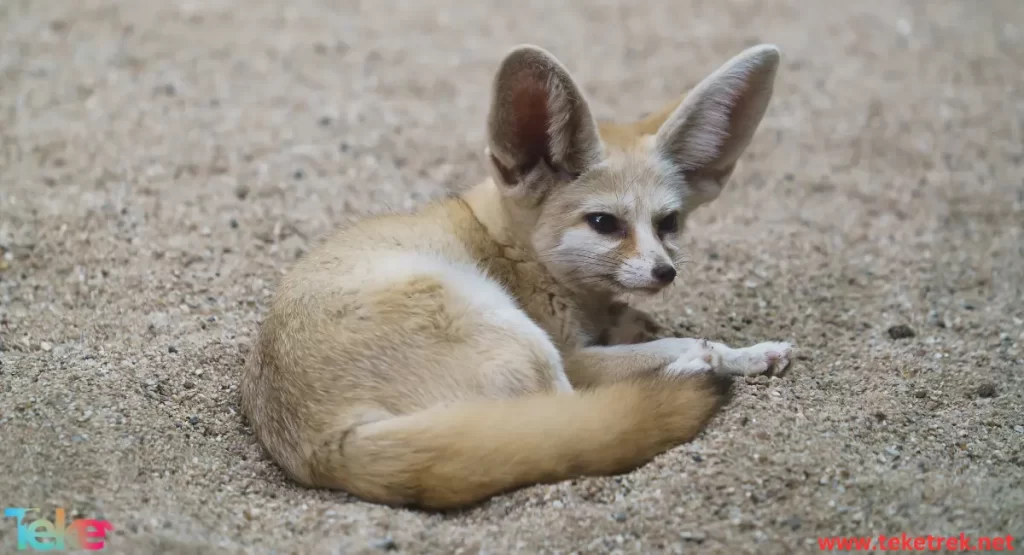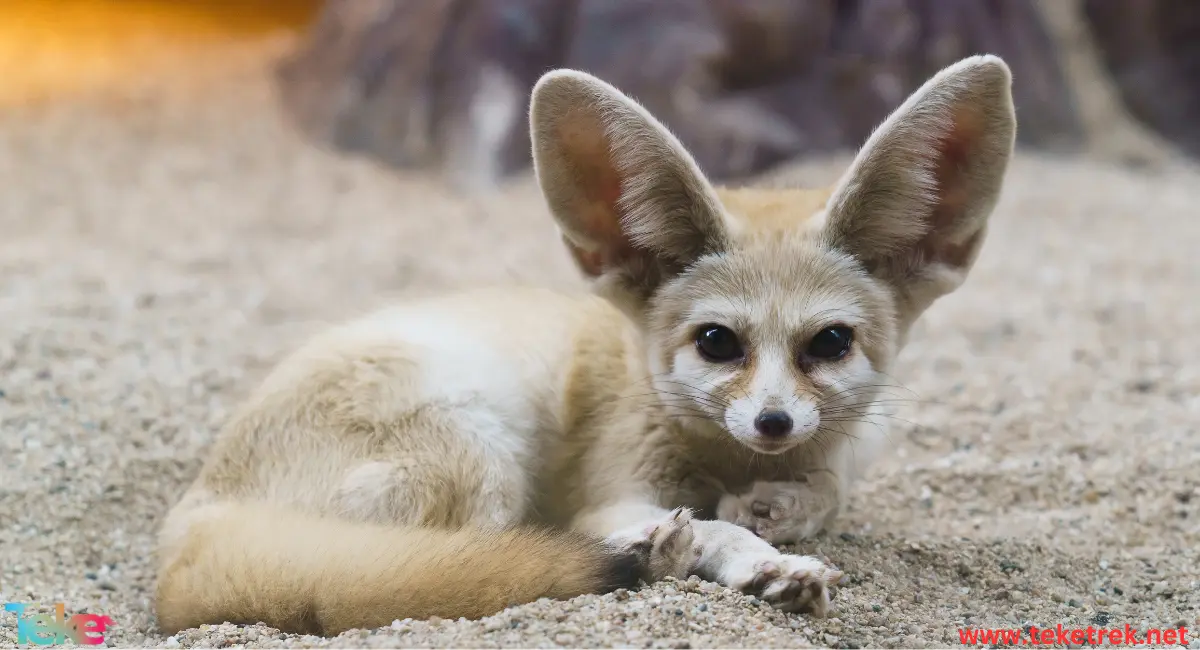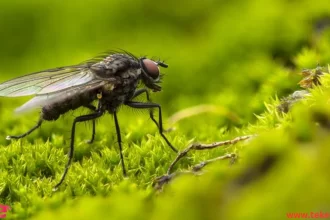The fennec fox is a small mammal that lives in wild and urban areas in Africa and some areas of the peninsula. The fennec fox is distinguished by its beauty and elegance, and is considered a symbol of cunning and intelligence in many cultures.
Let’s explore more about these animals from teke trek.

About the fennec fox
The fennec fox, desert fox, or hippocampus, is one of the small-sized species of foxes that lives in the Sahara Desert in North Africa and several parts of the Arabian Peninsula in Saudi Arabia.
The fennec fox is distinguished by its very large ears. Fennec is an eloquent Arabic name given to a type of furry animal.
The fennec fox feeds on a variety of small animals and insects, and is distinguished by its ability to adapt to the surrounding environment.
Desert fox subspecies come in different colors and patterns, making them a focus of interest for many animal lovers.
The fennec fox is a nocturnal animal, being active during the night and hiding during the day.
The fennec fox has a strong sense of smell that helps it detect food and dangers in its environment.
The fennec fox is the smallest species in the Canidae family.
Global rankings
Kingdom: Animal
Phylum: Chordates
Class: Mammals
Order: Carnivores
Family: Canidae
Genus: fox
Fennec fox habitat
The fennec fox lives in the Sahara Desert in North Africa and several parts of the Arabian Peninsula. It also lives in Morocco, Algeria, Egypt and Saudi Arabia. It resides in sandy, treeless areas with widespread plants.
The desert fox is considered a specific example of desert life, as it is found mainly in sandy, barren areas and dunes, especially in places that contain desert vegetation. The fennec fox is so well adapted to the desert climate that it does not need to drink water. Succulent plants are an important source from which it derives its water needs.
What are the characteristics of the fox
The fennec fox’s appearance is characterized by:
The fennec fox is small in size, about 36 cm long, and its weight ranges from 1 to 2 kg.
The fur of the fennec fox reflects sunlight during the day and contributes to its warmth at night.
The fennec fox’s body is covered with soft, sandy-colored fur, which makes it easy for it to camouflage itself in the desert.
The fennec fox has ears that are highly sensitive to sounds, as it can hear the sounds of insects when they crawl on the sand.
Its large ears make it easier for it to get rid of excess heat, as it passes blood through the many blood vessels in it.
The fennec fox has thick fur on the soles of its feet, which helps it move and withstand the heat of the sand.
Fennec fox diet
The desert fox is a carnivorous animal. It feeds on scorpions, insects, lizards, eggs, and birds. It also feeds on succulent desert fruits and plants. It also depends on the moisture content of its prey to obtain water. This animal can live for long periods without water and only drink when water is available.
Reproduction stages of the fennec fox
The female fennec fox lies on the male of her choice as an announcement that she is ready to mate. Fennec foxes are not monogamous, as the male mates with several females, while the secondary male mates with one female or does not mate at all.
Given the breeding habits of these animals, it can be said that they are vulnerable to hereditary diseases resulting from internal breeding, as is the case with cheetahs and lions.
The mating season usually extends from January to March, and after a gestation period lasting about 52 days, the female gives birth to young, ranging in number from 2 to 5.
Young puppies depend on their mother’s milk for their food until the age of one month. The female often gives birth once a year, and in rare cases she may give birth twice.
The most important facts and information about the fennec fox
The African fox, also known as the fennec fox, is a small carnivorous animal belonging to the Canidae family.
The fennec fox has long ears, lives in social groups, and can be kept as a pet in some countries. But it cannot be completely tamed, because the fennec fox suffers from genetic problems due to the inbreeding system.
The fennec fox is considered a national symbol of Algeria, as it expresses the solidity and cohesion of Algerian society in the face of challenges. The fennec fox is seen in Algerian culture as a symbol of resilience and strength in the face of hardship.

FAQs about the fennec fox
The fennec fox is a cute and interesting animal that lives in desert areas. It forms part of the mammal family and is characterized by its friendly and non-aggressive nature. The fennec fox is a carnivore, feeding mainly on insects, eggs, and lizards.
The fennec fox arouses the curiosity of many, so there are many frequently asked questions about this fascinating animal. In this paragraph, we will review some common questions that you may have about the fennec animal and we will provide comprehensive answers to them.
What is the difference between a fennec and a fox?
The fennec is considered the smallest species of the Canidae family. This animal has habits that are unusual from other types of foxes belonging to its genus, such as living in groups. While the rest of the foxes are solitary, it also has 32 pairs of chromosomes, while the rest of the foxes have about 35 to 39 chromosomes.
What are the benefits of desert fox ears?
The fennec fox’s ears are considered the largest in the canine family, as they help it get rid of excess heat and hear the movement of its prey during the night. His ears are also very sensitive to sounds, as he can hear the sounds of large insects such as locusts and beetles when they crawl on the sand.
Is the fennec fox considered a social animal?
These foxes live in large burrows, each of which contains several foxes, and thus they are the only species that lives in groups called the fennec group “harems,” which consist of a main male and several females.
Sometimes it includes secondary males who contribute to protecting the harem.
Is the fennec fox a ferocious animal?
No, the fennec fox is considered a non-aggressive animal. It is usually calm and friendly if it does not feel threatened. It can be a cute and attractive animal for many people, and it can be kept as a pet in some cases.
When does the fennec fox eat?
The fennec fox sleeps during the day, and searches for its food when darkness falls.
Why is it called the fennec fox?
The fennec fox is called this because it has a gland at the tip of its tail that releases musk when it feels afraid or surprised.
Ultimately, the fennec fox emerges as an outstanding example of adaptation and intelligence in the animal world. It is distinguished by its ability to adapt to its surrounding environment and use various strategies to survive.
Despite its beauty and intelligence, the fennec fox faces threats from habitat degradation and poaching. Protecting the fennec fox and preserving its natural habitat is important to ensure the continuity of this beautiful animal in nature.
By studying this animal, we realize the importance of intelligence and flexibility in facing the challenges and difficulties that we may encounter in our daily lives. The desert fox teaches us a valuable lesson about resilience, adaptation and survival in difficult circumstances, which makes it an inspiration to us all





